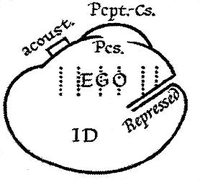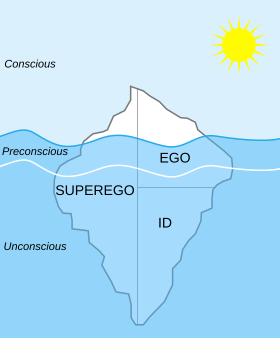Psychoanalysis is a set of theories and therapeutic techniques that deal in part with the unconscious mind, and which together form a method of treatment for mental disorders. The discipline was established in the early 1890s by Sigmund Freud, whose work stemmed partly from the clinical work of Josef Breuer and others. Freud developed and refined the theory and practice of psychoanalysis until his death in 1939. In an encyclopedic article, he identified the cornerstones of psychoanalysis as "the assumption that there are unconscious mental processes, the recognition of the theory of repression and resistance, the appreciation of the importance of sexuality and of the Oedipus complex." Freud's colleagues Alfred Adler and Carl Gustav Jung developed offshoots of psychoanalysis which they called individual psychology (Adler) and analytical psychology (Jung), although Freud himself wrote a number of criticisms of them and emphatically denied that they were forms of psychoanalysis. Psychoanalysis was later developed in different directions by neo-Freudian thinkers, such as Erich Fromm, Karen Horney, and Harry Stack Sullivan.

Sigmund Freud was an Austrian neurologist and the founder of psychoanalysis, a clinical method for evaluating and treating pathologies seen as originating from conflicts in the psyche, through dialogue between patient and psychoanalyst, and the distinctive theory of mind and human agency derived from it.
Psychoanalytic theory is the theory of personality organization and the dynamics of personality development relating to the practice of psychoanalysis, a clinical method for treating psychopathology. First laid out by Sigmund Freud in the late 19th century, psychoanalytic theory has undergone many refinements since his work. The psychoanalytic theory came to full prominence in the last third of the twentieth century as part of the flow of critical discourse regarding psychological treatments after the 1960s, long after Freud's death in 1939. Freud had ceased his analysis of the brain and his physiological studies and shifted his focus to the study of the psyche, and on treatment using free association and the phenomena of transference. His study emphasized the recognition of childhood events that could influence the mental functioning of adults. His examination of the genetic and then the developmental aspects gave the psychoanalytic theory its characteristics. Starting with his publication of The Interpretation of Dreams in 1899, his theories began to gain prominence.

In psychology, sublimation is a mature type of defense mechanism, in which socially unacceptable impulses or idealizations are transformed into socially acceptable actions or behavior, possibly resulting in a long-term conversion of the initial impulse.
Depth psychology refers to the practice and research of the science of the unconscious, covering both psychoanalysis and psychology. It is also defined as the psychological theory that explores the relationship between the conscious and the unconscious, as well as the patterns and dynamics of motivation and the mind. The theories of Sigmund Freud, Carl Gustav Jung, and Alfred Adler are all considered its foundations.
Ego psychology is a school of psychoanalysis rooted in Sigmund Freud's structural id-ego-superego model of the mind.
In classical Freudian psychoanalytic theory, the death drive is the drive toward death and destruction, often expressed through behaviors such as aggression, repetition compulsion, and self-destructiveness. It was originally proposed by Sabina Spielrein in her paper "Destruction as the Cause of Coming Into Being" in 1912, which was then taken up by Sigmund Freud in 1920 in Beyond the Pleasure Principle. This concept has been translated as "opposition between the ego or death instincts and the sexual or life instincts". In Beyond thePleasure Principle, Freud used the plural "death drives" (Todestriebe) much more frequently than the singular.
In Freudian psychology and psychoanalysis, the reality principle is the ability of the mind to assess the reality of the external world, and to act upon it accordingly, as opposed to acting according to the pleasure principle. The reality principle is the governing principle of the actions taken by the ego, after its slow development from a "pleasure-ego" into a "reality-ego".

Psychodynamics, also known as psychodynamic psychology, in its broadest sense, is an approach to psychology that emphasizes systematic study of the psychological forces underlying human behavior, feelings, and emotions and how they might relate to early experience. It is especially interested in the dynamic relations between conscious motivation and unconscious motivation.

The Ego and the Id is a prominent paper by Sigmund Freud, the founder of psychoanalysis. It is an analytical study of the human psyche outlining his theories of the psychodynamics of the id, ego and super-ego, which is of fundamental importance in the development of psychoanalysis. The study was conducted over years of research and was first published in the third week of April 1923.
In psychoanalysis, preconscious is the loci preceding consciousness. Thoughts are preconscious when they are unconscious at a particular moment, but are not repressed. Therefore, preconscious thoughts are available for recall and easily 'capable of becoming conscious'—a phrase attributed by Sigmund Freud to Josef Breuer.

In Freudian psychoanalysis, the ego ideal is the inner image of oneself as one wants to become. It consists of "the individual's conscious and unconscious images of what he would like to be, patterned after certain people whom ... he regards as ideal."
Resistance, in psychoanalysis, refers to the client's defence mechanisms that emerge from unconscious content coming to fruition through process. Resistance is the repression of unconscious drives from integration into conscious awareness.

Edith Jacobson was a German psychoanalyst. Her major contributions to psychoanalytic thinking dealt with the development of the sense of identity and self-esteem and with an understanding of depression and psychosis. She was able to integrate the tripartite structural model of classic psychoanalysis with the theory of object relations into a revised drive theory. Thereby, she increased the treatment possibilities of the more disturbed pre-oedipal patients.
In psychoanalytic theory, the term psychic apparatus refers to the mental structures and mechanisms of the psyche. In Freud's 'topographical' model of the psyche, it refers to three systems – the Unconscious, the Pre-conscious, and the Conscious. In his later 'structural model', Freud described the psychic apparatus in terms of the id, ego and super-ego.
Metapsychology is that aspect of any psychological theory which refers to the structure of the theory itself rather than to the entity it describes. The psychology is about the psyche; the metapsychology is about the psychology. The term is used mostly in discourse about psychoanalysis, the psychology developed by Sigmund Freud, which was at its time regarded as a branch of science, or, more recently, as a hermeneutics of understanding. Interest on the possible scientific status of psychoanalysis has been renewed in the emerging discipline of neuropsychoanalysis, whose major exemplar is Mark Solms. The hermeneutic vision of psychoanalysis is the focus of influential works by Donna Orange.

In classical psychoanalytic theory, the Oedipus complex refers to a son's sexual attitude towards his mother and concomitant hostility toward his father, first formed during the phallic stage of psychosexual development. A daughter's attitude of desire for her father and hostility toward her mother is referred to as the feminine Oedipus complex. The general concept was considered by Sigmund Freud in The Interpretation of Dreams (1899), although the term itself was introduced in his paper A Special Type of Choice of Object made by Men (1910).

An Outline of Psychoanalysis is a work by Sigmund Freud. Returning to an earlier project of providing an overview of psychoanalysis, Freud began writing this work in Vienna in 1938 as he was waiting to leave for London. By September 1938, he had written three-quarters of the book, which were published together in 1940, a year after his death. James Strachey writes that while "the Outline must be described as unfinished ... it is difficult to regard it as incomplete," given its fairly comprehensive treatment of the subject matter.
Robert Waelder (1900–1967) was a noted Austrian psychoanalyst and member of the Vienna Psychoanalytic Society. Waelder studied under Anna Freud and Hermann Nunberg. He was known for his work bringing together psychoanalysis and politics and wrote extensively on the subject.

Sigmund Freud is considered to be the founder of the psychodynamic approach to psychology, which looks to unconscious drives to explain human behavior. Freud believed that the mind is responsible for both conscious and unconscious decisions that it makes on the basis of psychological drives. The id, ego, and super-ego are three aspects of the mind Freud believed to comprise a person's personality. Freud believed people are "simply actors in the drama of [their] own minds, pushed by desire, pulled by coincidence. Underneath the surface, our personalities represent the power struggle going on deep within us".









